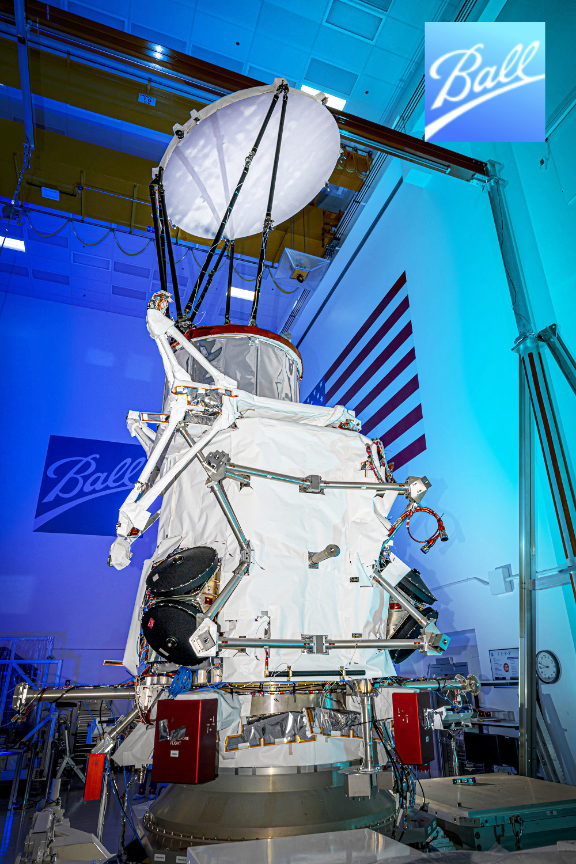
Ball Aerospace has completed the spacecraft bus for the Weather System Follow-on-Microwave (WSF-M) satellite, the U.S. Space Force’s (USSF) next-generation operational environmental satellite system. The company also finalized environmental testing on the Microwave Imager (MWI) instrument and has started final space vehicle assembly, integration and testing.

Upon delivery, WSF-M will provide mission data to Department of Defense’s (DoD) environmental prediction systems that support all warfighter domains. In addition, it will broadcast real-time, actionable environmental intelligence to on-going military operations across the globe.
At the heart of the WSF-M payload is the Ball-built, MWI sensor that takes calibrated, passive, radiometric measurements at multiple, microwave frequencies to measure sea surface winds, tropical cyclone intensity and additional environmental data.
The ECP sensor will provide critical space weather measurements. WSF-M was designed to mitigate three high-priority DoD Space-Based Environmental Monitoring (SBEM) gaps: ocean surface vector winds, tropical cyclone intensity and the space weather gap, LEO energetic charged particles. It will also address three additional SBEM gaps: sea ice characterization, soil moisture and snow depth. Ball Aerospace was recently awarded the contract modification to develop and build the second WSF-M space vehicle, expected to be completed by late 2027.
Ball Aerospace has played key roles on numerous operational weather satellite programs. The company’s Ozone Mapping and Profiler Suite (OMPS) instruments are operating on the Ball-built Suomi NPP and NOAA-20 satellites, launched in 2011 and 2017, respectively. OMPS is also on board the Joint Polar Satellite System-2 (JPSS-2), which launched on November 10, 2022. Ball is on contract with NASA to build two additional OMPS instruments for JPSS-3 and JPSS-4. The Ball-built Ion Velocity Meter (IVM) space weather sensors are flying on five of the six Constellation Observing System for Meteorology, Ionosphere and Climate-2 (COSMIC-2) satellites, a joint program with the U.S. Air Force, U.S. Space Force, Taiwan’s National Space Organization, NOAA and the University Corporation for Atmospheric Research that launched in 2019.
“The nearly simultaneous completion of the spacecraft bus and instrument testing mark a significant milestone for the WSF-M program,” said Hope Damphousse, vice president, Strategic Operations, Ball Aerospace. “We are moving forward with spacecraft integration of the MWI sensor, along with a government-furnished Energetic Charged Particle (ECP) sensor, which will be followed by a suite of space vehicle performance and environmental tests.”
